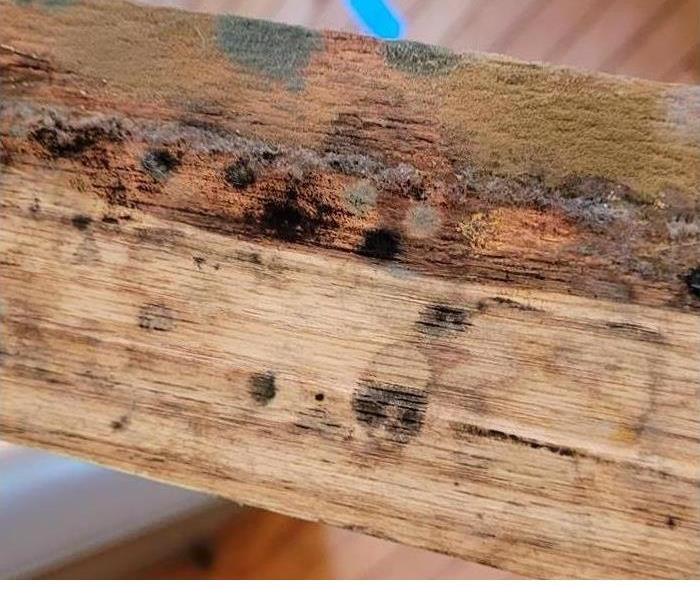Mold and Moisture in your Home
5/22/2023 (Permalink)
Mold is an ever-present element in our daily lives, both indoors and outdoors. Its occurrence is widespread, and it's important to note that not all molds pose a health risk. The potential harm often depends on the type and concentration of mold present. Mold spores effortlessly find their way into our homes through open windows, doors in constant use, and any areas where air can seep through. It's a common and unavoidable phenomenon – no home can truly be devoid of mold. For mold to thrive and grow into visible colonies, it requires two essential ingredients: water and a source of sustenance. By effectively controlling moisture levels, such as humidity and addressing any leaks, we can prevent microscopic mold spores from developing into larger mold colonies. Visualize these spores as seeds drifting in the air, intermingling with everyday household dust. When these "seeds" settle in an environment with the right combination of moisture and nutrients, mold colonies can sprout, thereby releasing even more spores. One prevalent mistake commonly encountered by professionals like SERVPRO involves homes with high humidity and inadequate airflow. Even a brief period of vacancy, like a week-long vacation, can provide ample time for substantial mold growth. This is particularly noteworthy in humid regions like the Midwest during the summer season. Thus, it becomes crucial to maintain proper climate control through dehumidification. While there's no need to set the AC to freezing temperatures, it should run sufficiently to regulate humidity levels within the dwelling. Air conditioners, especially central units, not only provide cooler air but also effectively extract excess moisture from the atmosphere, acting as proficient dehumidifiers.
Additionally, adequate air circulation holds equal importance, especially in basements. Proper airflow facilitates the evaporation of condensation on surfaces and directs moisture-laden air towards air conditioners or other dehumidifying units. Surfaces prone to dampness due to condensation create optimal conditions for mold growth. Consequently, even the use of a small fan, effectively circulating air in a damp basement, aids in evaporation and facilitates the transfer of moisture to any running dehumidifiers. If you notice a damp basement or detect a musty odor, it is advisable to contact professionals like SERVPRO of Dubuque. They possess the expertise to identify potential issues before they escalate into larger problems. In cases where the situation has already intensified, they can offer recommendations regarding the necessity of testing by an Indoor Environmental Professional (IEP), ensuring a comprehensive assessment and appropriate remediation measures.






 24/7 Emergency Service
24/7 Emergency Service